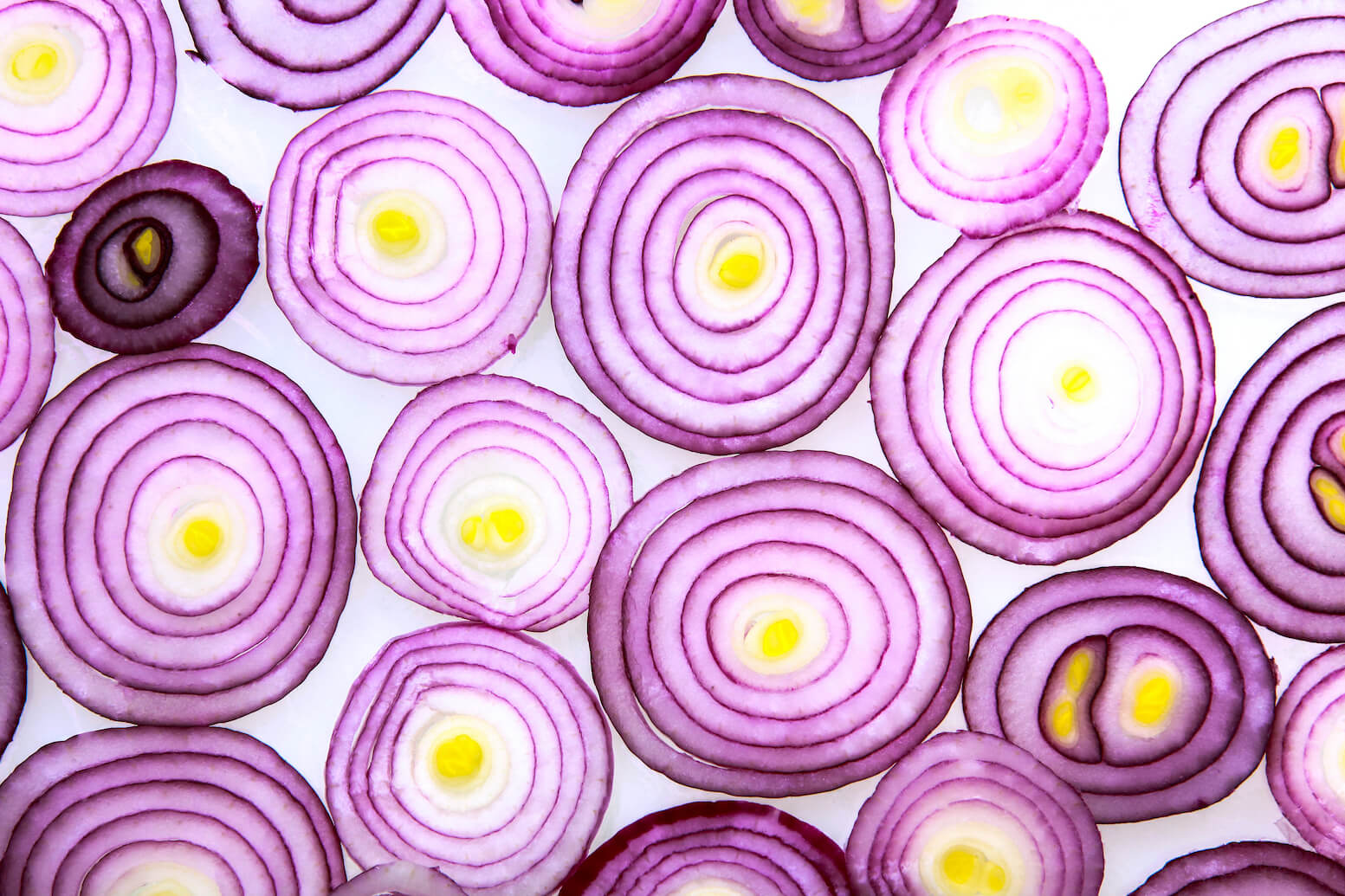- What happens if my dog eats chocolate?
- What happens if my dog drinks alcohol?
- What happens if my dog eats fruit?
- What happens if my dog eats avocado?
- What happens if my dog eats artificial sweeteners?
- What happens if my dog consumes caffeine?
- What happens if my dog eats garlic or onions?
- What happens if my dog eats grapes or raisins?
- What happens if my dog eats macadamia nuts?
- What happens if my dog eats yeast dough?
- What happens if my dog eats moldy walnuts?
- Some more helpful resources
You know you can instantly make your doggy’s day by tossing a bite of whatever you’re eating their way.
But it’s important to know that some things we find delicious can be super dangerous for our furry companions.
The good news is that your pet insurance policy will help cover the costs of tests and treatments for most of these accidents. So as long as you’re doing your part to keep your dog safe, we’ll do our share to help you when the unexpected happens.
We reached out to our favorite vet, Dr. Stephanie Liff, to find out the big no-no’s when it comes to toxic foods for dogs, and what pet parents do to keep their fur fam healthy.
If you’re in a rush (or frantically Googling because your pet JUST ate something suspicious), feel free to jump ahead. We’ll be covering chocolate, alcohol, fruit, avocado, artificial sweetener, caffeine, garlic & onions, grapes & raisins, macadamia nuts, yeast dough, and moldy walnuts.
If you’re studying for a veterinary exam, or are the sort of extra cautious person who wants something to print out and stick on the fridge…you can skip to this cool chart we made.
And for an even more comprehensive look at dangerous foods, be sure to check out our Toxic Foods List for Dogs—a handy guide to keep your pup safe from harmful snacks.
What happens if my dog eats chocolate?

Dr. Liff tells us that the type of chocolate your dog eats makes a big difference. You should really avoid letting your dog have any kind, but you’ll want to be especially careful with dark chocolate.
The darker the chocolate the higher the cocoa content, and the higher the cocoa content the more theobromine, which is the alkaloid that can make your dog (very) sick. So while white chocolate is still not pet food… it’s not as bad as dark chocolate.
When a dog eats too much chocolate it’s dangerous for several reasons. It speeds up their heart rate, and relaxes muscles that help their organs function properly. If your dog eats enough chocolate to reach toxic levels they’ll get diarrhea and start behaving strangely.
If you think your dog may have eaten one bar of dark chocolate, or several pieces of milk chocolate, you’ll want to get to the vet immediately as they could be at risk of seizures and even death.
How much is too much? An ounce or more.
What will happen at the vet? Your vet will most likely induce vomiting, and give activated charcoal to help clear out toxins from the chocolate. Your dog will probably get a catheter and receive IV fluids to stay hydrated.
How much could this cost? Between $3,000–$5,000.
What happens if my dog drinks alcohol?

We’re assuming you’re asking because your pup accidentally consumed some booze and not because you thought it would be cool to see them chug a can of Bud Light. (Seriously, bro…not funny.)
It’s a less common toxicity since beverages in general are less appealing and accessible to dogs. But if your pal does get a taste, you’re likely to see them suffer from the same things you do when you have too much alcohol… vomiting, loss of coordination, a higher body temperature, panting, and even seizures. It’s rare that a dog will die from drinking alcohol, but it is possible.
How much is too much? More than two ounces of vodka or other spirits, or more than a half can of beer. But as we said, any booze for dogs is “too much.”
What will happen at the vet? Depending on the dose, your dog will get IV fluids and anti-nausea medications. Any other clinical signs that arise will be managed if needed.
How much could this cost? $1,000–$2,000.
What happens if my dog eats fruit?

We’re not going to recommend that human food is ever the right choice for your dog, but if you’re going to give them fruit you should know which of them are actually toxic.
For the most part fruit, like most plants, is safe for your dog (and hearing them crunch on watermelon is delightful), but you’ll want to make sure you avoid pitted fruit for two main reasons:
- Fruits that have big pits, like nectarines or apricots, can cause a blockage in your dog’s intestines which would require surgery.
- You might think your pet is better off if they ate tiny seeds that can pass through without problems, but the bigger concern is actually that pits and seeds contain cyanide, which is toxic for your pet (and for you too!).
A few cherry pits might be okay, but you’ll know your dog has too much cyanide in their digestive system pretty quickly. Watery eyes, weakness, excessive drooling, heavy breathing, and unusual aggression are all signs of cyanide ingestion, as well as urinary incontinence, bloody diarrhea, muscle spasms and vomiting, and even fatal seizures.
And BTW, it’s not just pitted fruits that can cause this type of toxicity, so make sure your dog stays away from almonds, lima beans, bamboo shoots, barley, and flaxseed too.
How much is too much? Any pit that can block digestion, or if they eat a bunch (like a bowl of discarded cherry pits)
What will happen at the vet? Your vet will begin by determining how much cyanide has been ingested. If your dog ate several small pits they will probably induce vomiting in order to count how much they ate. Sometimes they’ll need x-rays to determine if there is a blockage from a larger pit, which would require surgery. If there’s no surgery your pet will probably stay in the hospital 1–2 days to receive pain medication, IV fluids, antibiotics, and other medication to treat any other symptoms.
How much could this cost? $4,000–$5,000 and up, with surgery.
What happens if my dog eats avocado?
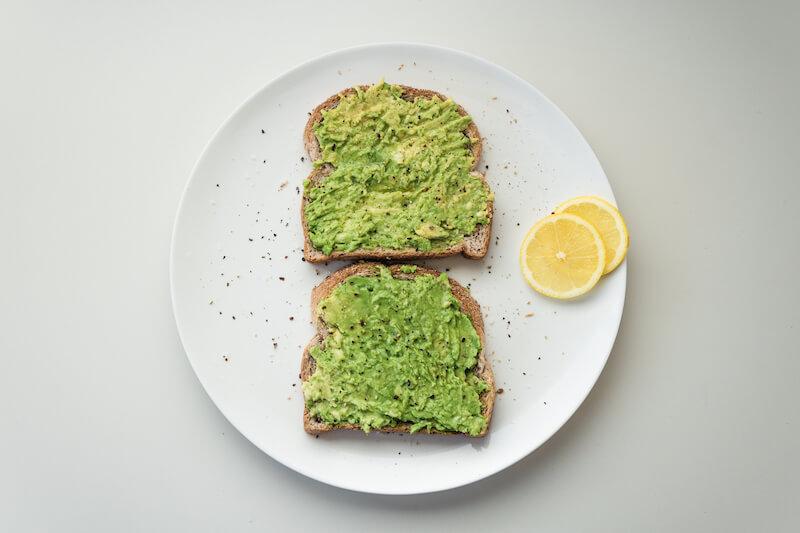
We know you love avocado toast. Sadly, your dog can’t enjoy much of this yummy brunch snack.
Like other fruits, the avocado pit can get stuck in your dog’s intestine. The pit could also expose them to persin, a toxic substance that causes vomiting, diarrhea, and inflammation. Avocado leaves and skin also have small amounts of persin, but other parts of the avocado—like the delicious green bits inside—are less toxic to dogs.
What if your trendy influencer dog really wants to eat some avocado and post the evidence on their Insta? If so, only give small amounts, and remove the pit. Meanwhile, make sure you’re not keeping your avocados on a counter where they can be easily reached by a dog who thinks they’re weirdly shaped tennis balls.
How much is too much? Any part of the avocado pit.
What will happen at the vet? Induced vomiting, which could lead to x-rays and possibly surgery.
How much could this cost? $500–$1,000 without surgery; $4,000–$5,000 and up with surgery.
What happens if my dog eats artificial sweeteners?

Xylitol isn’t the name of a weird comic book hero from the 1980s. It’s a product in many sugar-free sweeteners that causes hypoglycemia and liver failure.
If your dog gets more than a piece of sugar-free candy or chewing gum, for instance, you may see vomiting, diarrhea, weakness, or collapse. Greater amounts of Xylitol can cause liver failure within 72 hours, possibly leading to jaundice, vomiting, diarrhea, seizures, and death.
Xylitol is in more than just chewing gum. You can find it candy, baked goods, and other artificially sweetened products—even certain peanut butters.
This is an especially scary toxic food for dogs because it takes about 72 hours for your dog to get sick, and when it’s a bad reaction, the outcome is almost always fatal.
If you catch the problem within 12 hours of your dog having eaten a problematic food, your vet will be able to detect low blood sugar and start treatment immediately.
How much is too much? Any amount of Xylitol.
What will happen at the vet? Your vet will monitor blood sugar and liver enzymes for 12–72 hours. Your dog may also need IV fluids, IV sugar supplements, and anti-nausea medicine.
How much could this cost? $3,500–$5,000 or more.
What happens if my dog consumes caffeine?
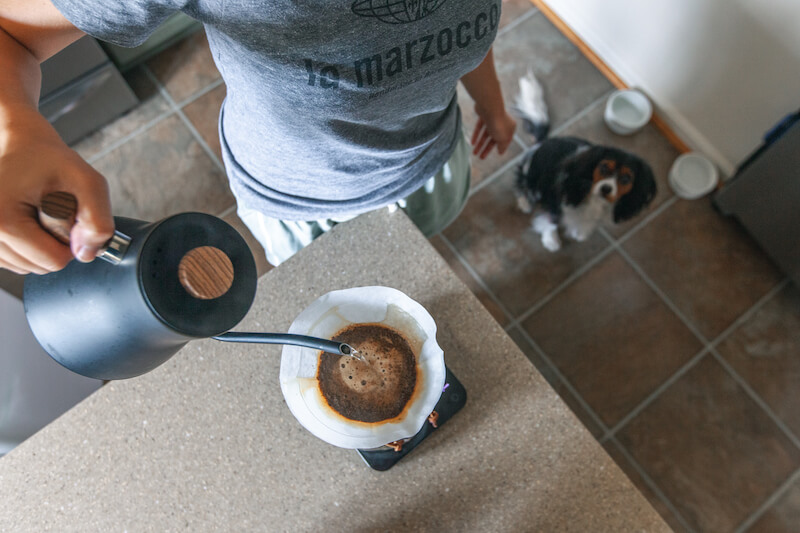
You might depend on your daily dose of coffee or tea, but your dog should stay away from caffeine. At high doses, caffeine is extremely toxic to your bestie.
And remember, caffeine isn’t just in that Starbucks latte…If your dog sneaks a few bites of dark chocolate or swallows one of your chocolate-covered espresso beans, they can experience vomiting, diarrhea, panting, collapse, and death.
How much is too much? Any amount of caffeine.
What will happen at the vet? They’ll get IV fluids, and maybe given something to help them vomit.
How much could this cost? $1,500, or more with overnight ER fee.
What happens if my dog eats garlic or onions?
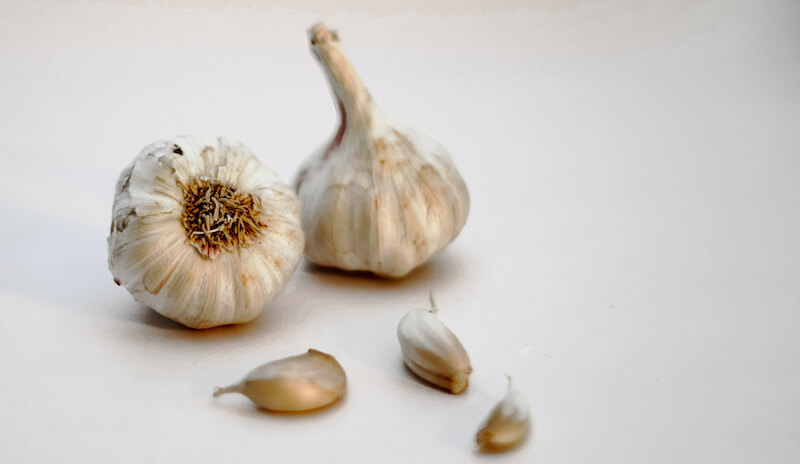
Garlic and onions elevate several of our favorite dishes, but they are dangerous foods for your pet!
Any form of garlic and onion are toxic to dogs—even onion powder. They cause hemolytic anemia, which means the red blood cells break apart and rupture and your dog will struggle to get enough oxygen to their vital organs. Just a few bites of onion or garlic may cause vomiting, diarrhea, discoloration of urine, pale gums, weakness, and tiredness.
Too much could be fatal. If your dog eats half of an onion, call the vet ASAP.
How much is too much? Anything beyond a small taste.
What will happen at the vet? Your vet will start with bloodwork to determine if their red blood cells were impacted. For small doses your vet will end up treating your dog with antacids anti-nausea medication, but if the bloodwork shows damage to your dog’s red cells they’ll need to get doses of antioxidants like vitamin C and nacetylcysteine, and in severe cases a blood transfusion. The tests and treatments can take anywhere from 24–72 hours.
How much could this cost? $3,000 and up with more severe cases.
What happens if my dog eats grapes or raisins?

Make sure your pooch stays away from grapes and raisins—common foods that make great mid-day snacks, but are toxic and can cause kidney failure.
It might take multiple days before any symptoms show, but when they do, you might see your dog vomiting, displaying excessive thirst, sleeping often, and experiencing abdominal pain. Any dose may cause sickness. Chat with your vet immediately if your pup gets into a bunch of grapes or a bag of raisins.
How much is too much? Any amount.
What will happen at the vet? Induced vomiting, IV fluids, and kidney monitoring for 48–72 hours.
How much could this cost? $3,000 and up for full treatment.
What happens if my dog eats macadamia nuts?
Here’s some good news: macadamia nuts won’t kill your dog, but that doesn’t mean this human food isn’t a big no-no.
Their toxicity can lead to vomiting, weakness, hyperthermia, and even depression. Most reactions are mild and don’t need professional guidance, but if your pooch shows severe symptoms, contact your vet for direction.
How much is too much? A few macadamia nuts.
What will happen at the vet? The doctor will induce vomiting as soon as possible and use activated charcoal to absorb all the toxins. IV fluids will flush out these toxins and make sure your pup stays hydrated.
How much could this cost? $1000–$4000 depending on severity.
What happens if my dog eats yeast dough?

Chaotic times call for homemade bread, and it seems like everyone’s become a baker during the pandemic. But make sure to keep raw dough away from counter corners, as it will make your dog sick.
Unbaked yeast dough is toxic to dogs for two reasons. Bread dough expands, which can cause your dog’s stomach to swell. As a result, they may act funny while experiencing major discomfort.
Also, the fermentation of yeast produces alcohol, which absorbs into the bloodstream. You know that too much drinking causes loss of coordination, vomiting, and dehydration, and dogs can experience those same reactions from a much smaller amount of alcohol. In severe cases, dogs may have seizures or even die from alcohol poisoning.
How much is too much? Any amount.
What will happen at the vet? Your vet will induce vomiting and insert a tube from your dog’s mouth to stomach to clean out the yeast or alcohol. If the yeast is rising, your pup might need surgery to remove the dough.
How much could this cost? $3,000–$5000 depending on severity.
What happens if my dog eats moldy walnuts?
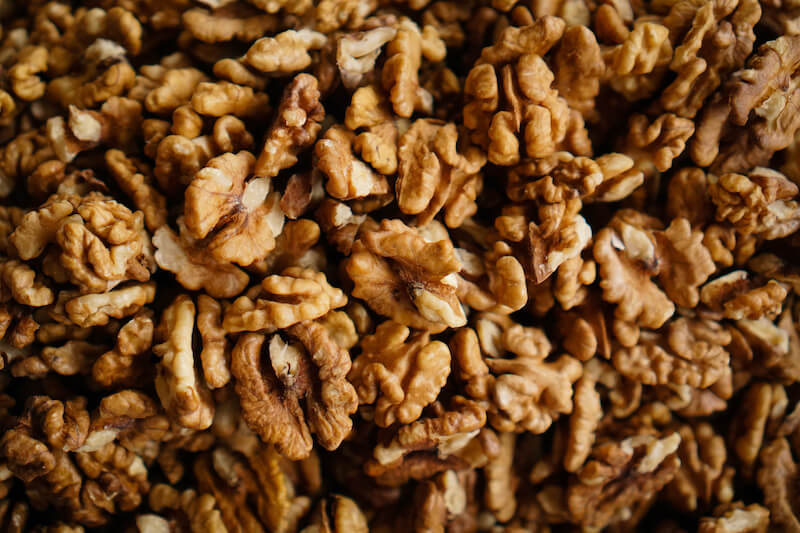
Yes, you read that right. Moldy walnuts. In general, any kind of moldy people food can be fatal for dogs. Fungi can produce tremorgenic mycotoxins which cause severe neurological symptoms. If your pooch gets into an expired bag of walnuts, they may encounter depression, tremors, and seizures. (Walnuts are also extra dangerous because smaller dogs can choke on them.)
Fresh walnuts are not toxic to dogs. But a high dose with a high fat level could cause a reaction. If your dog eats a handful of fresh walnuts or a single moldy walnut, contact your vet for advice.
How much is too much? One moldy walnut.
What will happen at the vet? Your pet doctor will give your dog medicine to control seizures. They’ll also give something to flush your dog’s stomach and IV fluids.
How much could this cost? $1000–$5000 if they need extended hospitalization.
Some more helpful resources
Any time your dog sneaks a bite of something toxic, it’s better to be safe than sorry.
- Time is of the essence. If you notice potentially toxic food missing, just go to the vet! Doctors can help induce vomiting and get the toxins out of your doggy. The faster you get there, the better.
- If you are unsure, call the 24/7 ASPCA poison control hotline: (888) 426-4435. A vet specialist will give you advice on whether you should be worried and list potential treatment plans.
And for the toxic food completists out there, here’s that comprehensive chart we teased at the beginning of this article! Best of luck, and here’s to a happy and healthy life for you and your pet.
| If my dog eats… | It will affect their… | And could result in… | When to go to the vet | Possible costs |
|---|---|---|---|---|
| Chocolate | Theobromine levels | Vomiting, diarrhea, restlessness, high blood pressure, seizures, muscle tremors, heart failure | If your dog eats a bar of milk chocolate or a few bites of dark chocolate (depending on your dog’s size) | $3,000–$5,000 |
| Alcohol | Central nervous system | Vomiting, disorientation, increased body temperature, panting, muscle tremors or seizures | If your dog has more than a few sips of alcohol | $1,000–$2,000 |
| Fruit seeds | Breathing patterns and intestines | Vomiting, bloody diarrhea, watery eyes, drooling, seizures, aggression, muscle spasms, weakness, urinary incontinence, abnormal breathing | If your dog has eaten a small handful of almonds, lima beans, bamboo shoots, barley, flaxseed, or one peach, apricot, or cherry (toxicity depends on pit size) | $4,000–$5,000 |
| Avocado | Persin levels; the pit can also get stuck in their intestine | Vomiting, diarrhea, and possible inflammation of esophagus, stomach, and intestine | If your pup ate any part of the pit or skin, or large amounts of the interior fruit itself | $500–$1,000 or up to $5,000 with surgery |
| Xylitol (artificial sweetener) | Blood sugar and insulin levels | Vomiting, diarrhea, weakness, collapse, liver failure, death | If your dog ingests any amount | $3,500–$5,000 or more |
| Coffee/tea/caffeine | Major organs: heart, lungs, liver, central nervous system, kidneys | Vomiting, diarrhea, shaking, panting, agitation, seizures | If your dog ingests any amount | $3,500–$5,000+ |
| Garlic/onions | Red blood cells’ ability to carry oxygen | Vomiting, diarrhea, tiredness, weakness, drooling, pale gums, reddish urine, collapse, death | If your dog ingests half of a medium-to-large sized onion, or more than one bite of something with garlic | $1,000–$3,500 |
| Grapes/raisins | Kidneys | Vomiting, diarrhea, increased thirst and urination, weakness, abdominal pain, kidney failure | If your dog eats any amount of grapes or raisins | $3,000–$4,500 |
| Macadamia nuts | Pancreas | vomiting, diarrhea, weakness in legs, hyperthermia, depression | If your dog shows any symptoms, or has eaten more than. a couple of nuts | $1,000–$4,000, depending on severity |
| Yeast dough | Stomach | Vomiting, distended stomach, elevated heart rate, weakness, collapse, death | If your dog eats more than a single bite of unbaked yeast dough | $3,000–$5,000 |
| Moldy walnuts | Brain | Depression of the nervous system, along with tremors, seizures, and death | If your dog eats any amount | $1,000–$5,000 |

